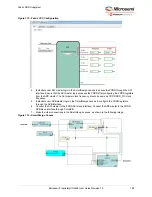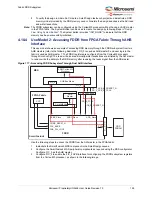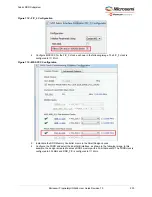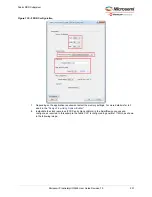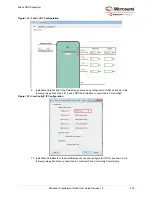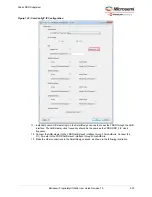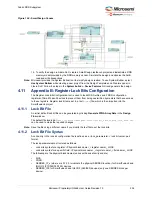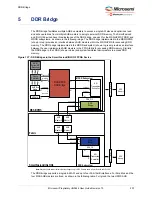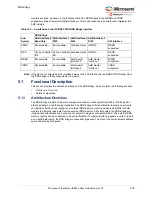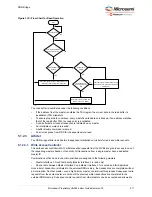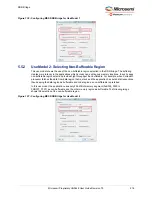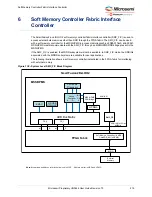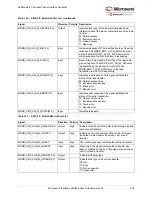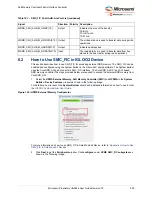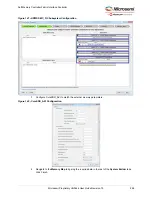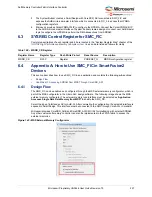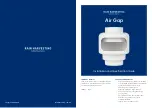
DDR Bridge
Microsemi Proprietary UG0446 User Guide Revision 7.0
212
write into WCB, but the DDR bridge does not write this data until the previous write transactions are
completed to the external DDR memory.
5.1.2.3.2
Read Access Controller
The read access controller (RAC) arbitrates read requests from read buffers and grants access to one of
the requesting masters depending on its priority.
Combinations of fixed and round robin priorities are
assigned to the masters as below:
•
Master Interface 0 and Master Interface 1 have fixed first and second priority
•
Round robin between Master Interface 2 and Master Interface 3 for second and third priority
The RAC also routes the read data from the AXI slave (MDDR or FDDR) to the corresponding master
based on the Read data ID.
5.1.2.3.3
Locked Transactions
The DDR bridge masters can initiate locked transfers by asserting the HMASTLOCK signal of the
corresponding AHB interface. These locked transactions are initiated only after all the pending write and
read transactions are completed.
The arbiter has a 20-bit up counter for detecting a lock timeout condition. The counter starts counting
when a locked transaction is initiated on the bus. When the counter reaches its maximum value, an
interrupt is generated. The interrupt can be cleared by setting the DDR_LOCKOUT bit in the
MSS_EXTERNAL_SR from the SYSREG block. In SmartFusion2 When the counter reaches its
maximum value, an interrupt is generated to the Cortex-M3 processor. The error routine has to be stored
in either eNVM or eSRAM for the Cortex-M3 processor to fetch the interrupt service routine (ISR) without
going through the DDR bridge. As part of the ISR, the Cortex-M3 processor reads the SYSREG registers
to identify the master and take appropriate action to release the arbiter from dead lock. If the interrupt is
cleared and the lock signal is still asserted, the counter will start counting again.
5.2
How to Use DDR Bridge in IGLOO2 Device
This section describes how to use DDR bridge. To configure the IGLOO2 device features and then build
a complete system, use the
System Builder
graphical design wizard in the Libero SoC software.
The following illustration shows the initial
System Builder
window where you can select the features that
you require. For details on how to launch the
System Builder
wizard and a detailed information on how
to use it, refer the

